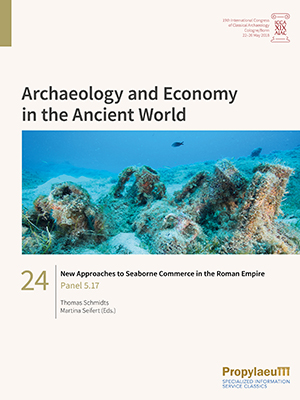Seifert, Martina
New Approaches to Seaborne Commerce in the Roman Empire: Panel 5.17
Seaborne commerce in the Roman Empire is characterised by a remarkable efficiency for the pre-modern world. From Egypt to Britain, trade connections can be proven on the basis of archaeological finds. The range of these activities includes the Mediterranean, the Black Sea and parts of the north-eastern Atlantic. Important reference points for the assessment of Roman merchant shipping are ports, ships and cargo remains. Due to the large number of known shipwrecks and ports, archaeology in particular can contribute to a better understanding of maritime trade.
The contributions address various aspects of the "seaborne commerce" with a broad methodological spectrum. In addition to wreck finds, the relevance of inscriptions on amphorae and other cargo remains are considered as well as the formation of networks, the reconstruction of ship routes and the performance of ancient watercraft based on experiments.
Regional exchange of ceramics – case studies and methodology: Panel 5.7
Pottery vessels and other ceramic objects constitute important sources for issues of trade and exchange in Antique societies as they are available in great quantities and as their provenance often can be determined by archaeological or archaeometric methods. Most studies on the exchange of ceramics however concentrate on aspects of long-distance trade, as differences between wares and/ or types produced in different, far distant regions can be recognized more easily. This fact, together with the psychological fact of the greater attractiveness of these items, might have lead to an exaggerated perception of the amount of goods traded via the oversea trade in the archaeological record. In contrast to this, aspects of regional exchange between neighbouring cities have not been given the same attention in the field of Mediterranean archaeology, although they might give important insights into the problems of regional connectivity and they also had greater importance during Antiquity than normally assumed. One of the reasons of this deficit can certainly be found in the difficulty of clearly and unambiguously distinguishing ceramics produced within one r egion f rom e ach other, a s t hey o ften s hare the s ame repertory of shapes or decoration styles.
This panel comprises case studies from different areas and different periods of the Mediterranean, all of which clearly demonstrate the difficulties in reconstructing networks of regional exchange, but also show their importance for the economy of ancient towns.








